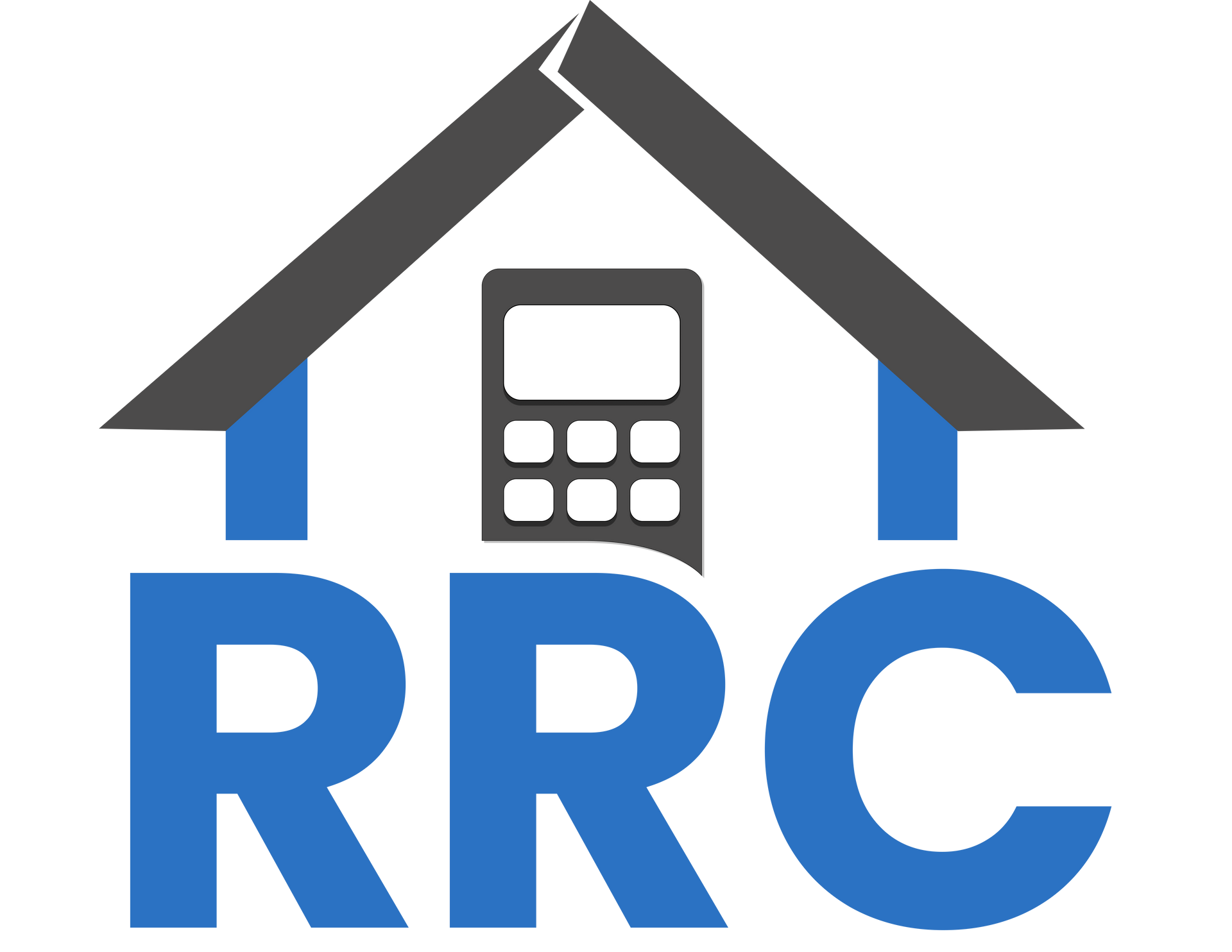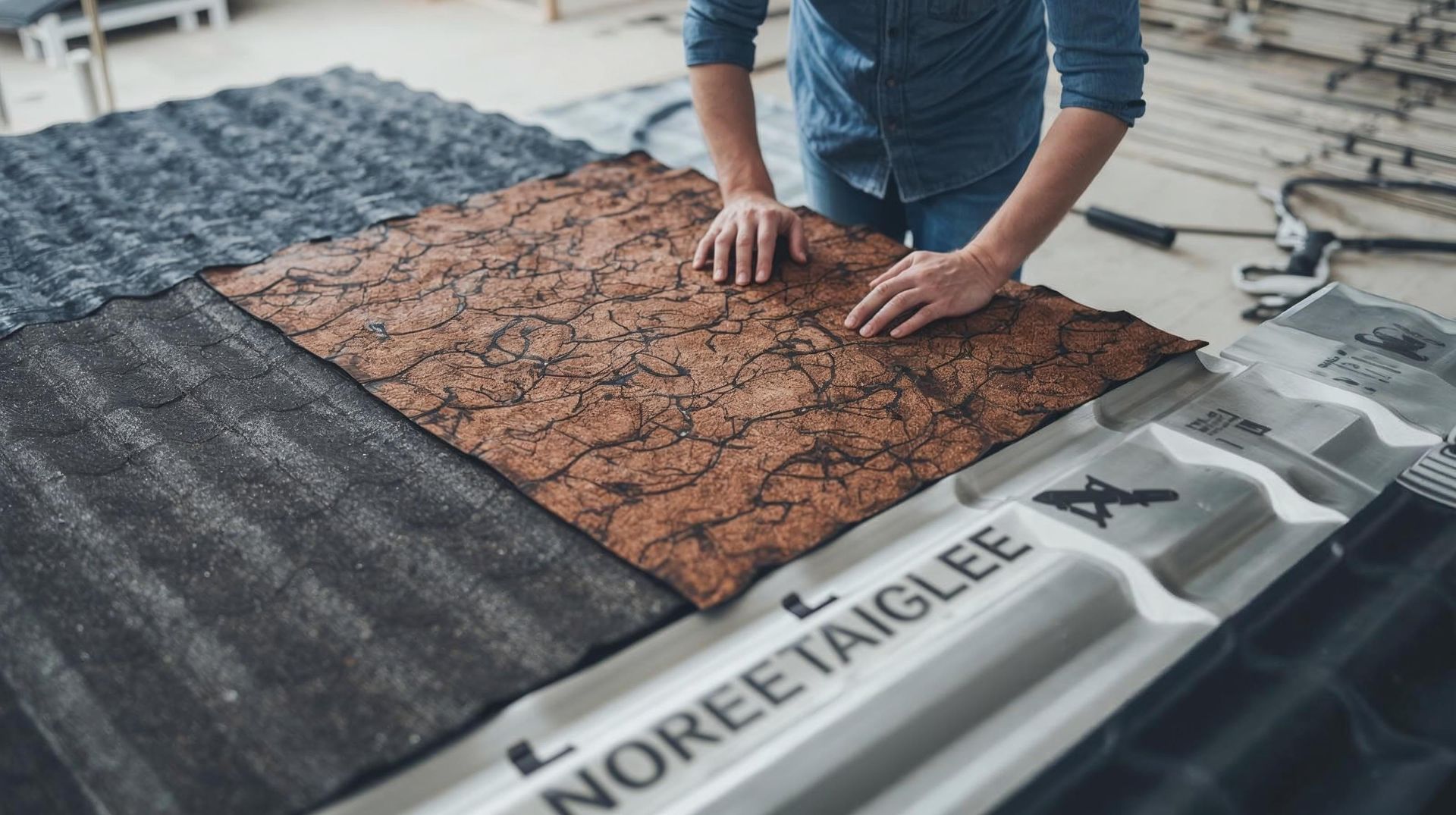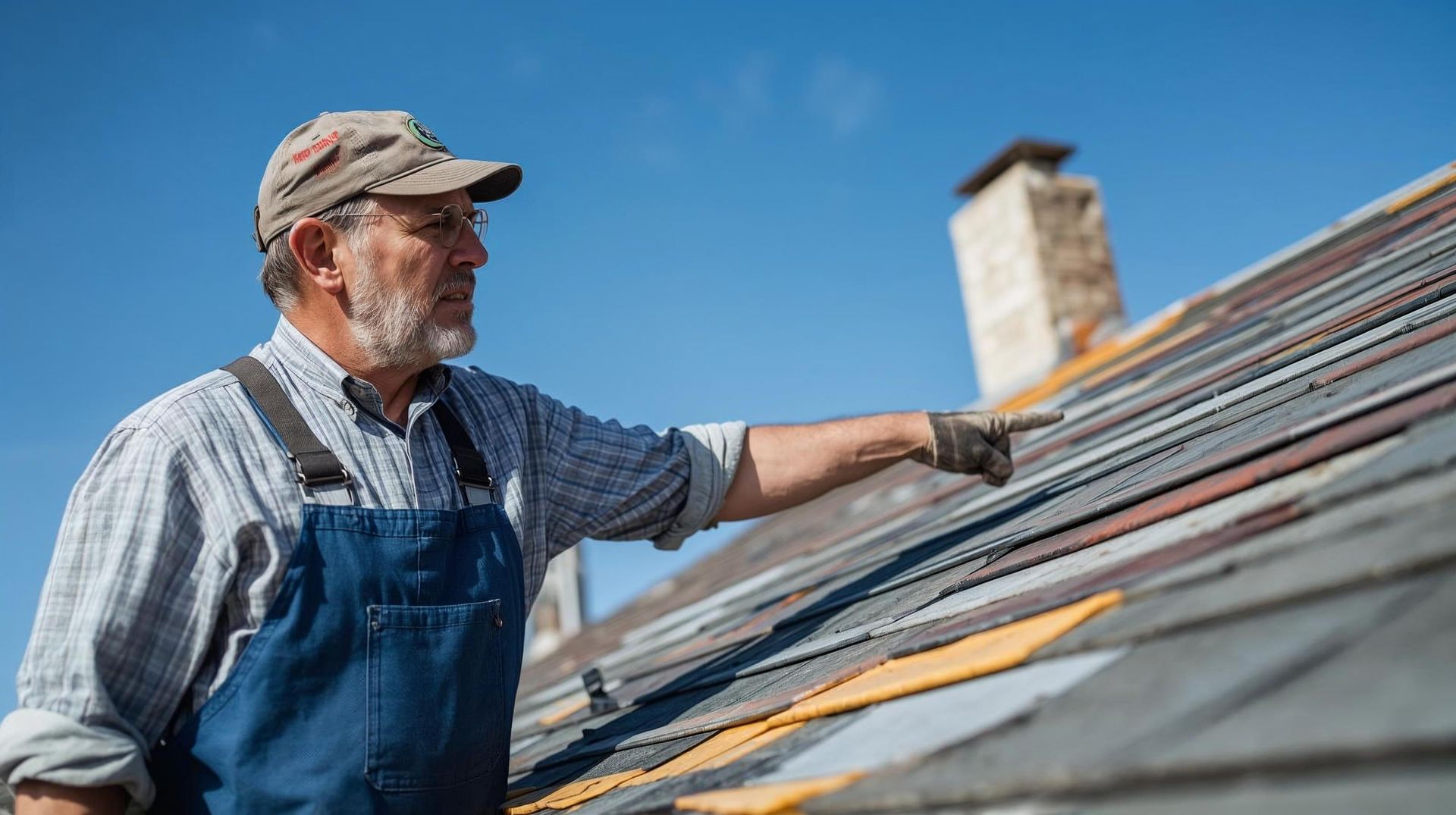How to Spot and Handle Hail Damage on Your Roof
Key Takeaways
In a hurry? Here's the bottom line on handling hail damage:
- Safety First: Never get on a wet or steep roof to inspect for damage. Do your initial inspection safely from the ground.
- Look for "Bruises": Hail damage on asphalt shingles often looks like dark, soft spots or "bruises" where the protective granules have been knocked off.
- Check the Whole Property: Dents on your gutters, downspouts, and air conditioner fins are strong evidence that the hail was large enough to cause roof damage.
- Call Your Insurer First: Before hiring a roofing contractor, contact your homeowners' insurance provider immediately to start the claim process.
- Use a Storm Damage Specialist: Hire a reputable roofing contractor who has experience working with hail damage claims and insurance companies.
Think you have hail damage? Don't wait.
>> Get Your Personalized Roof Replacement Cost Estimate Now !<<
Hail Damage on Roof: Key Signs Every Homeowner Should Know
After a hailstorm rolls through your neighborhood, your first concern is the integrity of your roof. Roof damage from hail can range from minor cosmetic damage to serious problems that can lead to roof leaks and a full roof replacement.
Knowing how to spot the signs of damage and understanding the first steps to take are critical for protecting your home and navigating the insurance claim process successfully. This guide will provide a clear checklist for identifying hail damage and a step-by-step plan for handling it.
How to Spot Hail Damage from the Ground?
Safety is key. A wet roof is slippery, and it's best to leave the up-close roof inspection to a professional. However, you can spot most of the key evidence of hail damage on your roof safely from the ground. Think of yourself as a detective looking for clues around your entire property.
Check Your Gutters, Downspouts, and Vents
These metal components on your home's exterior are a "tell-tale" sign of a hail storm's intensity. Walk around your house and look for dents and dings on your aluminum gutters, downspouts, and any metal roof vents or roof penetrations. If you see a consistent pattern of dents, it's a strong indicator that the hail was large and hard enough to cause significant damage to your shingles as well. Note the wind direction if possible, as most dents will be on the side of the house the storm came.
Inspect Your Siding, Windowsills, and Screens
Don't just look up. Check the sides of your house. Hail impacts can chip or crack vinyl siding and leave dents on painted wood surfaces and window screens.
This helps you build a more complete picture of the storm damage for your insurance company. In a severe weather event, hail can even lead to broken windows.
Look at Your Air Conditioner/Heat Pump Unit
The thin metal fins on top of your outdoor AC unit are very susceptible to hail. If these fins are dented and damaged, it's almost certain that your roof also sustained damage.
This is one of the easiest pieces of evidence to photograph for your insurance claim, as it proves the hail was forceful.
What Hail Damage Looks Like on Different Roofing Materials
The damage caused by hail will vary greatly depending on your roofing material. It’s important to know what you’re looking for.
- Asphalt Shingles: Look for dark, circular spots that are soft to the touch, like a bruise on an apple. This is a classic sign of hail damage to asphalt. This granule loss is different from normal wear and tear and compromises the shingle's ability to provide protection from the sun, which can lead to cracking and leaks over time.
- Metal Roof: A metal roof will show obvious dents from hail impacts. While this is often considered cosmetic damage, very large hail can tear or puncture the metal, especially at seams, leading to leaks. On some policies, even significant cosmetic damage can be covered.
- Wood Shingles or Shakes: Hail can crack or split wood shingles, often leaving random, splintered impact marks. This damage breaks the protective seal of the wood shakes and allows water to seep underneath, which can lead to rotting wood.
- Clay Tiles or Slate: While extremely durable, clay tiles and slate can be cracked or shattered by very large hailstones. Look for sharp, clean breaks or chipped, sharp corners. A single broken tile can be a gateway for significant water damage.
The Insurance Process: A Step-by-Step Guide
If you spot hail damage, acting quickly and methodically is key. Navigating hail damage claims can be a straightforward process if you follow the right steps.
1. Document Everything Immediately
Before you do anything else, the first step is to document the visible damage. Walk around your property and use your phone to take clear photos and videos of all the damage you can find.
- Pro Tip: Be sure to get pictures of the dents on your metal gutters, downspouts, and AC unit. This is easy-to-see evidence that proves the hail was forceful enough to cause roof damage.
- If you can safely find any hailstones, take a picture of one next to a coin or ruler for a clear size reference. This documentation is crucial evidence for your insurance claim.
2. Contact Your Homeowners Insurance Provider
Your next call should be to your insurance company. Use their claims hotline or your agent's number to report the storm damage and officially start the process. They will give you a claim number—write this down and keep it handy. It's important to file a claim promptly, as most policies have a time limit for reporting roof damage.
3. Prepare for the Adjuster's Visit
Your insurance company will assign an adjuster to schedule a professional inspection of your property. Their job is to assess the damage caused by the hailstorm and determine the scope of what's covered. Have your photos ready for their visit. It's also helpful to understand two key terms you'll hear:
- Actual Cash Value (ACV): This is the value of your roof today, with its age and normal wear factored in. It's the depreciated value.
- Replacement Cost Value (RCV): This is the cost to repair or replace your roof with new, similar building materials at today's prices.
4. Get Quotes from a Reputable Roofing Contractor
While waiting for the adjuster, start getting a few free estimates from local, reputable roofing contractors who specialize in storm damage. This gives you your own baseline for the potential repair or roof replacement cost. An experienced roofing contractor can also be a powerful advocate, offering to be on-site when the adjuster visits to point out damage and ensure nothing is missed in their assessment.
Choosing the Right Contractor for Hail Damage Repairs
After a major hail storm, your neighborhood may be flooded with offers for a new roof. It's crucial to choose the right roofing company and avoid scams.
Why You Need a Storm Damage Specialist
When you are repairing hail damage, it's best to work with a roofing contractor who has deep experience with the insurance process. They know how to spot hail damage that adjusters might miss, how to properly document it, and how to work with the insurance company to make sure your claim is handled fairly and accurately. They understand the difference between hail damage and manufacturing defects or normal wear, which is critical for a successful claim.
Red Flags: How to Avoid "Storm Chasers"
Be very wary of storm chasers. These are out-of-town companies that show up after severe weather, knock on every door, and use high-pressure tactics. Here are some red flags:
- They offer to cover your deductible (this is a form of insurance fraud).
- They pressure you to sign a contract on the spot.
- They lack a local address or proper licensing for your area.
- They demand full payment up front before any work is done. Always choose a local, established roofing contractor with a proven track record in your community.
What Happens During a Hail Damage Roof Repair or Replacement?
Once you have an approved insurance claim and a trusted roofing contractor, the repair process will begin. If you have only minor roof damage, a contractor may simply repair the affected areas by replacing individual shingles or fixing roof penetrations.
For a full roof replacement, the process is more involved.
- Material Delivery: Your chosen roofing material, whether asphalt shingles or a metal roof, will be delivered to your property.
- Property Protection: The crew will cover your siding, windows, and landscaping with tarps to protect them from debris.
- Tear-Off: The crew will strip the hail-damaged roof materials down to the roof decking. This is a critical step to inspect for any underlying water damage or rotting wood.
- Installation: The new roof is installed, from underlayment to the final shingles.
- Cleanup: A thorough cleanup of your property, including a magnetic sweep for nails, is the final step.
Post-Hailstorm Action Checklist
Use this quick checklist to assess the damage and take the right steps.
| Item to Check | |
|---|---|
| VISUAL INSPECTION | |
| Dents on Gutters, Downspouts, or AC Unit | [ ] |
| Cracks or Chips in Siding & Window Frames | [ ] |
| Dark "Bruises" or Granule Loss on Shingles | [ ] |
| Visible Cracks or Splits on Wood or Tile | [ ] |
| ACTION STEPS | |
| Photograph All Visible Damage | [ ] |
| Contact Insurance Company & Start Claim | [ ] |
| Research Local, Reputable Contractors | [ ] |
Conclusion: Taking Control After the Storm
While a hailstorm is out of your control, your response is not. By safely inspecting your property, documenting the hail damage, calling your insurer promptly, and choosing a reputable roofing contractor, you can turn a stressful situation into a smooth and successful roof repair or replacement. Even minor roof damage should not be ignored, as it can compromise your roof's integrity and lead to bigger problems like leaks, mold, and water damage down the road.
Get a professional, independent assessment of your roof's condition.
>> Schedule a Free, No-Obligation Hail Damage Inspection Today <<
How long do I have to file an insurance claim after a hailstorm?
Most homeowners insurance policies require you to file a claim within one year of the storm, but you should report the damage as soon as you discover it. Check your specific policy for the exact time limit.
Will my insurance rates go up if I file a hail damage claim?
Generally, insurance rates do not increase due to a claim for an "Act of God" like a hail storm, because it's not related to your negligence as a homeowner. However, if there are many claims in your entire region, rates for everyone could rise over time.
What if my insurance adjuster's estimate is lower than my contractor's quote?
This is a common situation. A reputable roofing contractor can submit their own estimate and photos to your insurance company and negotiate on your behalf to ensure the claim covers all necessary repair work with quality building materials.
My roof is old. Will insurance still pay for hail damage?
Yes. Your insurance is meant to restore your roof to the condition it was in before the storm. If an old roof that still had several years of life left is destroyed by hail, it is typically covered. However, the insurance company may only pay the depreciated value (Actual Cash Value) rather than the full replacement cost.



